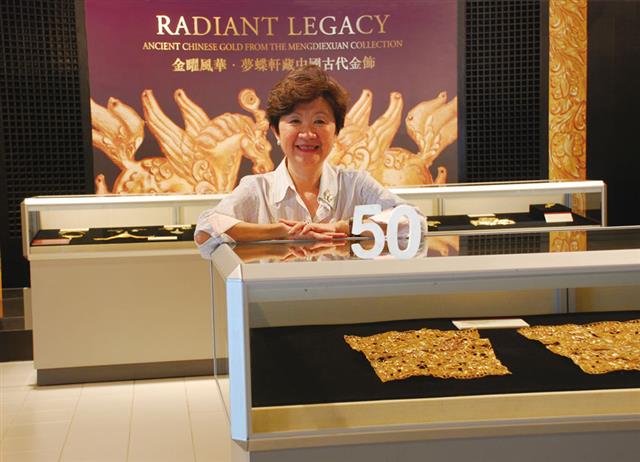Before joining CUHK, you were the senior curator of an art gallery in the US. What brought you here?
A curator may be different from a teacher, but they share the same goal—to educate. An art gallery aims at kindling public interest in art and raising the appreciation of it. Teaching focuses on nurturing new artistic talent. Both jobs are equal in terms of importance. I had worked in an art gallery for a long time when the opportunity to teach in a fine arts department emerged, so I took up the challenge.
Why are you interested in history of Chinese bronzes and jades?
By coincidence. Following China's open door policy in the late 1970s, new archaeological excavations were publicized. At that time, I was studying art history at Harvard Graduate School. My supervisor was a specialist in ancient Chinese antiquities, so I naturally followed the same path. Besides, stories should be told from the start. Jade appeared over 5,000 years ago in the Neolithic period, and bronze, 3,000 to 4,000 years ago. They are the best media for understanding the origin, characteristics and achievements of ancient Chinese art.
Where are the strengths of the Department of Fine Arts? Which areas should be enhanced?
Our strength lies in having the Art Museum which enables fine arts students to examine closely the features of the exhibits in the permanent and other collections. This is way more effective than letting them study photos. I always bring undergraduate and postgraduate students to the Art Museum for tutorial. They are very enthusiastic. It's indeed a rare and valuable experience. The department also has a wealth of teaching talent in topics from ancient Chinese jade and bronze, Chinese painting and calligraphy, religious sculpture, ceramics and seal cutting, to contemporary Chinese art history. Quite a number of emerging Hong Kong artists in recent years are CUHK graduates using traditional Chinese artistic methods to present themes on modern Hong Kong. The greatest limitation of our department is inadequate space for making art, which prevents us from admitting more students.
How do Hong Kong's fine arts students compare to those overseas?
Hong Kong students are very passionate about creating—definitely no less than overseas students, but they are not too zealous about doing academic research, and learning about the background and culture behind artistic creation. Foreign students, on the other hand, are more interested in understanding and analysing different cultures.
Any plans for the future development of the Art Museum?
The mission of the Art Museum is to serve as one of the University's media of education. Our service targets are not only fine arts students, but also CUHK staff and other students, as well as the general public. We hope to cultivate appreciation for Chinese art and its accomplishments through exhibitions, lectures and publications. We have recently appointed two associate directors and integrated our work in exhibition and research, collection management, conservation, facilities and equipment, education and outreach. We'll strive to fulfil our mission and strengthen ties with the Department of Fine Arts in teaching and research.
Could you share with us some tips on appreciating works of art?
My suggestion is to read the illustrations before viewing the work. It will give you information such as why the piece was created, the social background and the creator's mind, etc., which would help you to appreciate its special features and accomplishments. You'll end up getting more out of the work than you expected.
Please tell us about your work for the West Kowloon Cultural District (WKCD).
I serve on the board of WKCD Authority to contribute my experiences in art gallery management and art education, and to remind the authorities not to neglect the education, promotion and training functions of the West Kowloon project. I sincerely hope that WKCD will be a place where people of all ages like to hang out, like the art districts in Washington and Paris.



